Shadow of the Tomb Raider review – a hidden treasure or broken relic?
Lady Croft’s rebooted origin story concludes, but is it another trip into Uncharted territory?

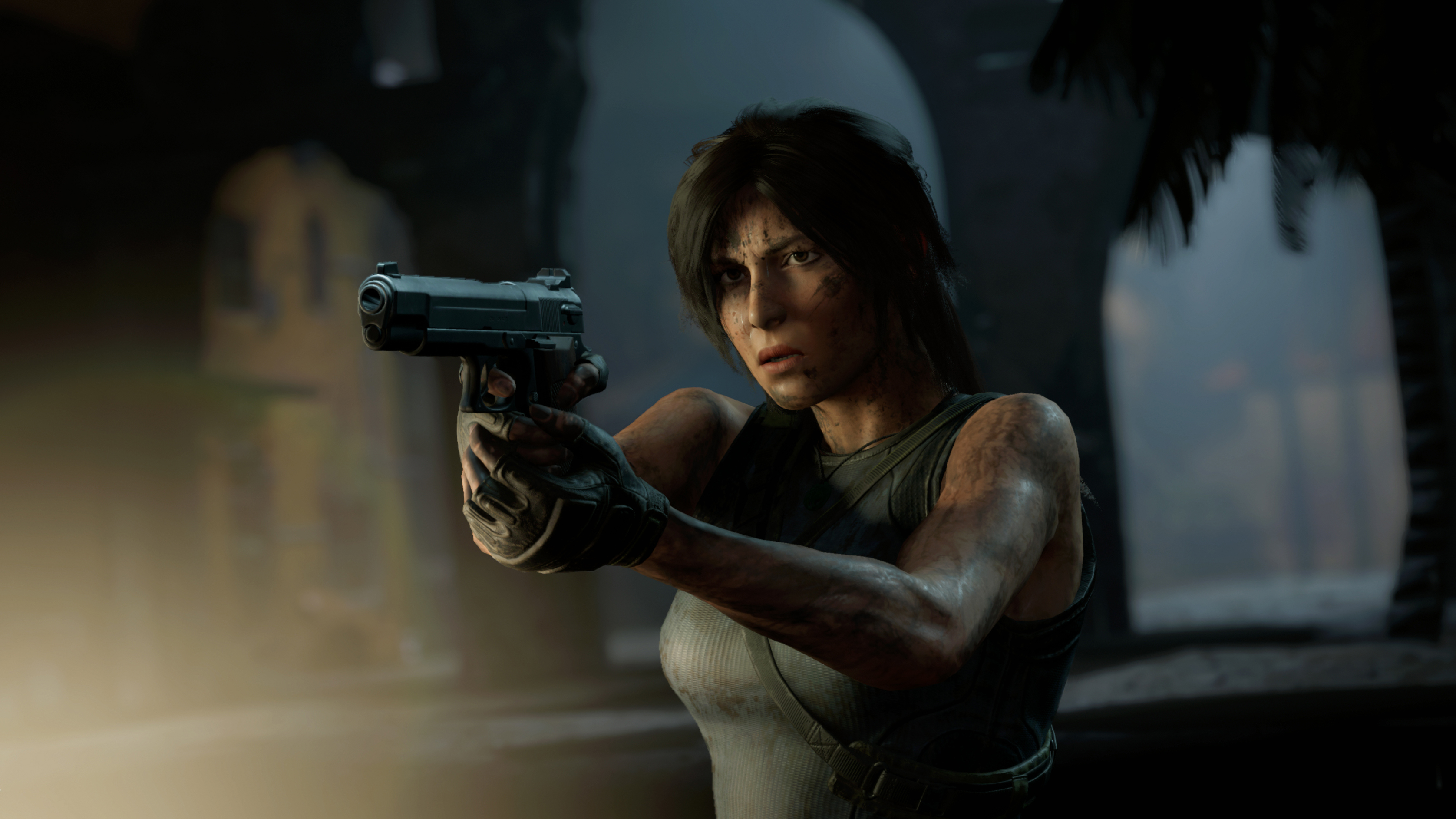
While the transformation of Lara’s character never really comes to fruitition (despite some incredibly affecting scenes), Shadow of the Tomb Raider nevertheless offers enough new gameplay enhancements to make this the most rewarding entry in the series in years. The combat focuses more on hunting enemies rather than gunfights, there’s a greater focus on elaborate platforming, and it boasts some the best tomb designs yet. It’s starting to share a little too much DNA with Uncharted, but it’s still an action-packed adventure worth undertaking.
-
+
Peruvian jungle is the best setting yet
-
+
Combat is stealth/hunting focused
-
+
Tons to explore, collect and raid
-
-
Lara still a one-dimensional heroine
-
-
Still not enough tombs
Why you can trust T3
Twenty-two years after Tomb Raider first rewrote the 3D platforming rules - and six years on from its 2012 reboot - the globe-trotting adventuress Lara Croft is once again on the hunt for all things ancient, valuable and incredibly dangerous. Free of the Xbox exclusivity that unfairly marred 2015’s Rise of the Tomb Raider, this third instalment in Crystal Dynamics’ revitalised take on the franchise looks to bring the gaming icon’s origins to a close as she embraces her destiny as the titular crypt botherer.
With Crystal Dynamics hard at work on an as-yet-untitled Avengers game, core developmental duties have fallen onto the shoulders of Deus Ex studio Eidos Montréal, with the team at CD on hand in more of a collaborative role. Not that you’d notice, because Shadow of the Tomb Raider instantly looks, sounds and plays like a legitimate continuation of the series. Everything from the multi-faceted platforming across breath-taking vistas to the obligatory gunfights with an army of military goons, you’re getting a proper, full-fat TR experience.
Shadow of the Tomb Raider review: official launch trailer
Shadow of the Tomb Raider review: story and characters
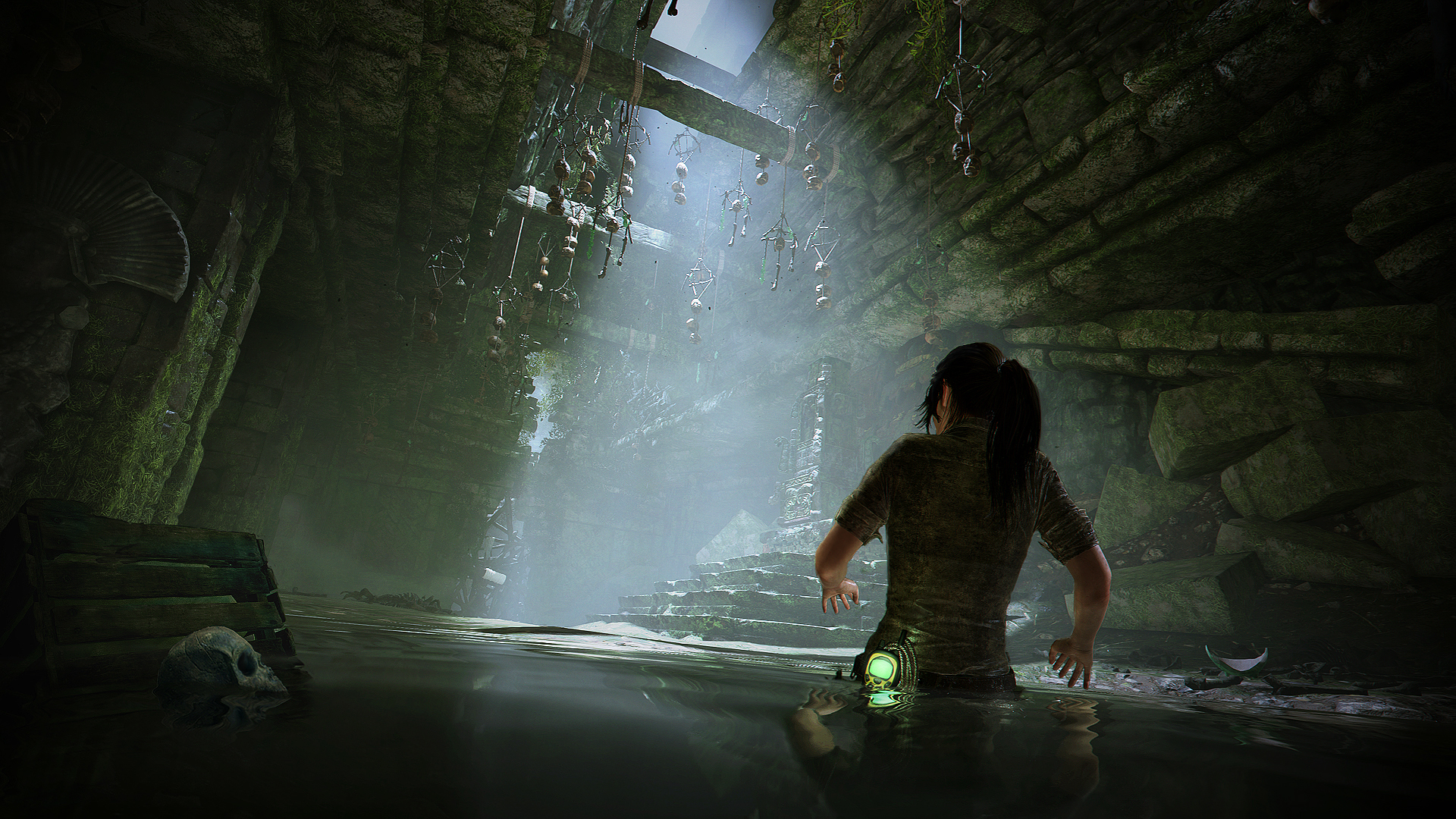
The underwater sections of SotTR make for some of the best and most intense sequences.
Much like the previous two games in the series, Lara and best friend Jonah are once again going head-to-head with Trinity, a shadowy organisation hell-bent on using ancient artifacts to remake the world (as villains are want to do). Lara’s attempts to foil Trinity cause her to unwittingly unleash the beginning of a Mayan apocalypse, setting her on a race against time across South America in search of a lost Inca city. And while the story itself is as hokey as the previous two games, it does offer a clean way for newcomers to jump on-board without too much trouble.
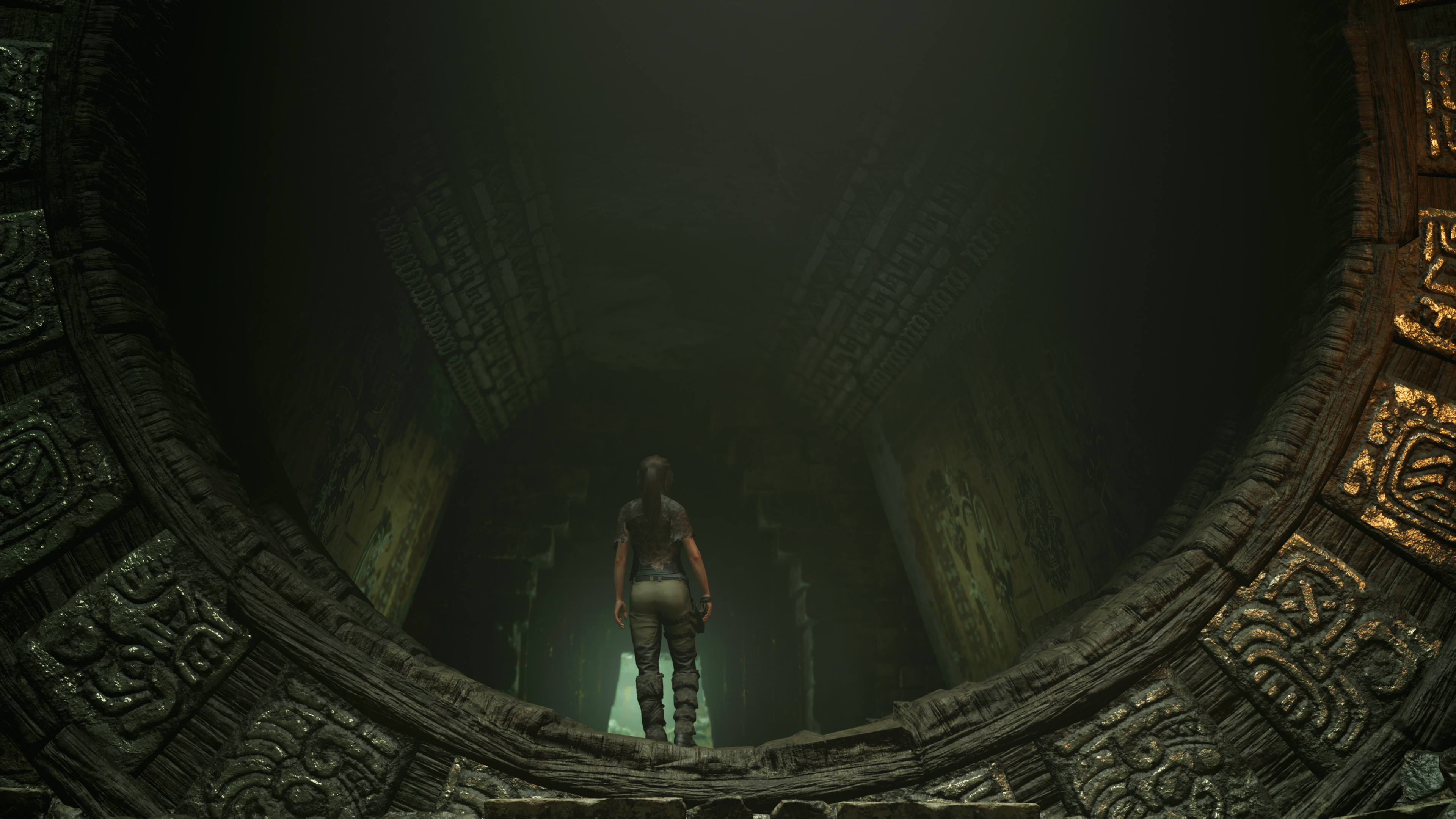
It's the scale of SotTR's level design that really strikes you, ranging from deep cave systems to verdant jungle ruins.
There are plenty of interesting and layer characters to encounter - especially when you eventually reach the mythical and captivating city Piatiti - giving each of its hub-like locales a sense of tangible personality and culture. Even Jonah himself comes across as a far more believable sidekick throughout, often serving as the real emotional core of the story (despite not being the main focus of it). Unfortunately, big reason why his nuanced character stands out so much is because of how little Lara’s actually changes.

The jungles of Peru make for a more claustrophobic approach to level design, but it provides Lara with far more agency.
A big part of the 2012 reboot was to help her transcend the sex symbolism of her PlayStation roots and mold her into a believable heroine of today. Sadly, whether its down to Camilla Luddington’s often wooden performance or the inconsistent quality of the script - it’s likely a mix of the two - Lara’s journey from a selfish narcissist only concerned with the thrill of the chase to a ‘humbled’ savior never truly lands, even with a number of heart-wrenching scenes to help sell it. The game tells you she’s transforming as a result of her growth as a character, but you never truly believe it.
Shadow of the Tomb Raider review: combat and platforming
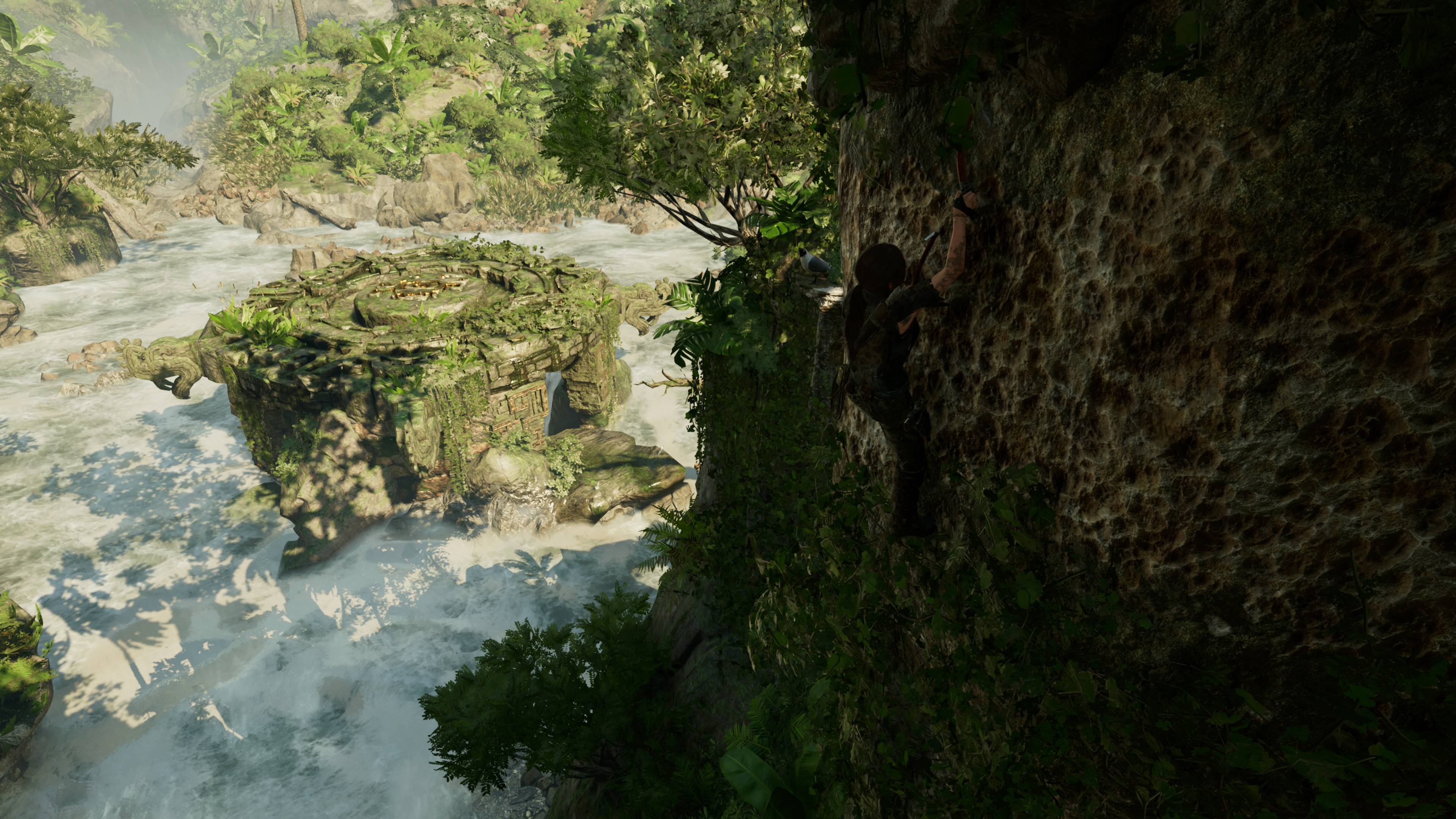
The ability to rappel and hang from cave ceilings adds a new dimension to Lara's climbing and platforming repertoire.
Heading back to Peru isn’t just a way for the series to pay homage to its 1996 original, but as a means of testing Lara’s platforming acrobatics, stealth movement and combat skills in a vastly different environment. Gone are rocky cliff-faces of Yamatai or the snow-swept mountains of Siberia, replaced with the dense jungles and lush tropical lagoons. It transforms every fact of the game you have played before. You can now climb trees and use vines to traverse the canopy and reach higher areas, but it also enables you to prey on enemies much like the like predatory elevation of the Batman: Arkham series.
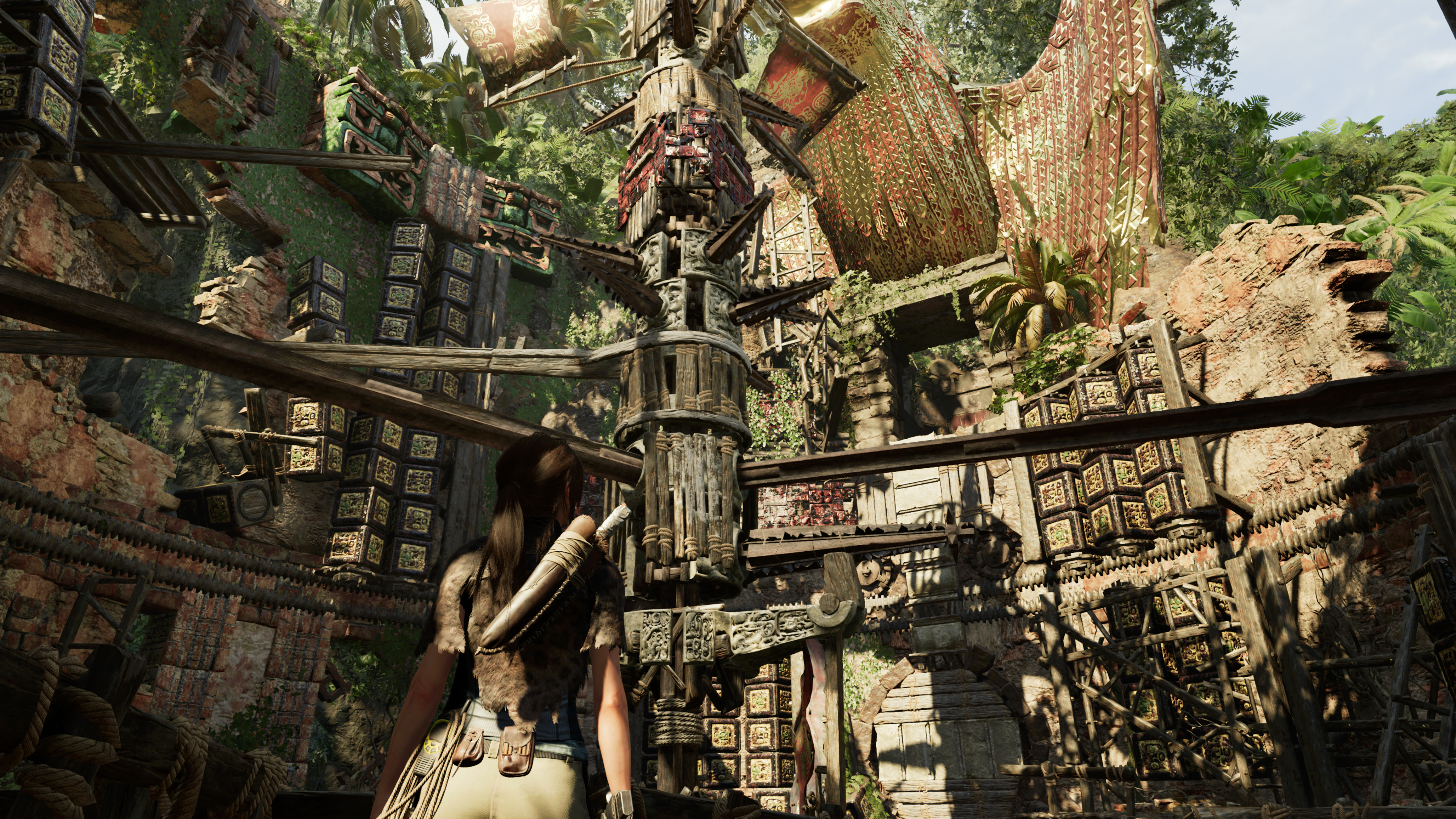
Expect plenty of environmental puzzles, many of which hide their own deadly traps and hidden dangers...
Gunfights have also felt acutely out of place in Tomb Raider, especially at the rate which you had to take cover behind barrels and fight another group of gun-toting soldiers every ten minutes. You’ll still have to take on Trinity’s henchman in SotTR, but now you can use the environment to your advantage to a far greater degree. You can camouflage yourself with mud, Predator-style, use mud and vine-covered walls to stealth kill enemies and use those treetop vantage points to string up unsuspecting foes. AI isn’t that much smarter, but the use of new enemy types (such as those that use thermal vision to see through stealth spots) does add a little extra twist to each encounter.
Get all the latest news, reviews, deals and buying guides on gorgeous tech, home and active products from the T3 experts
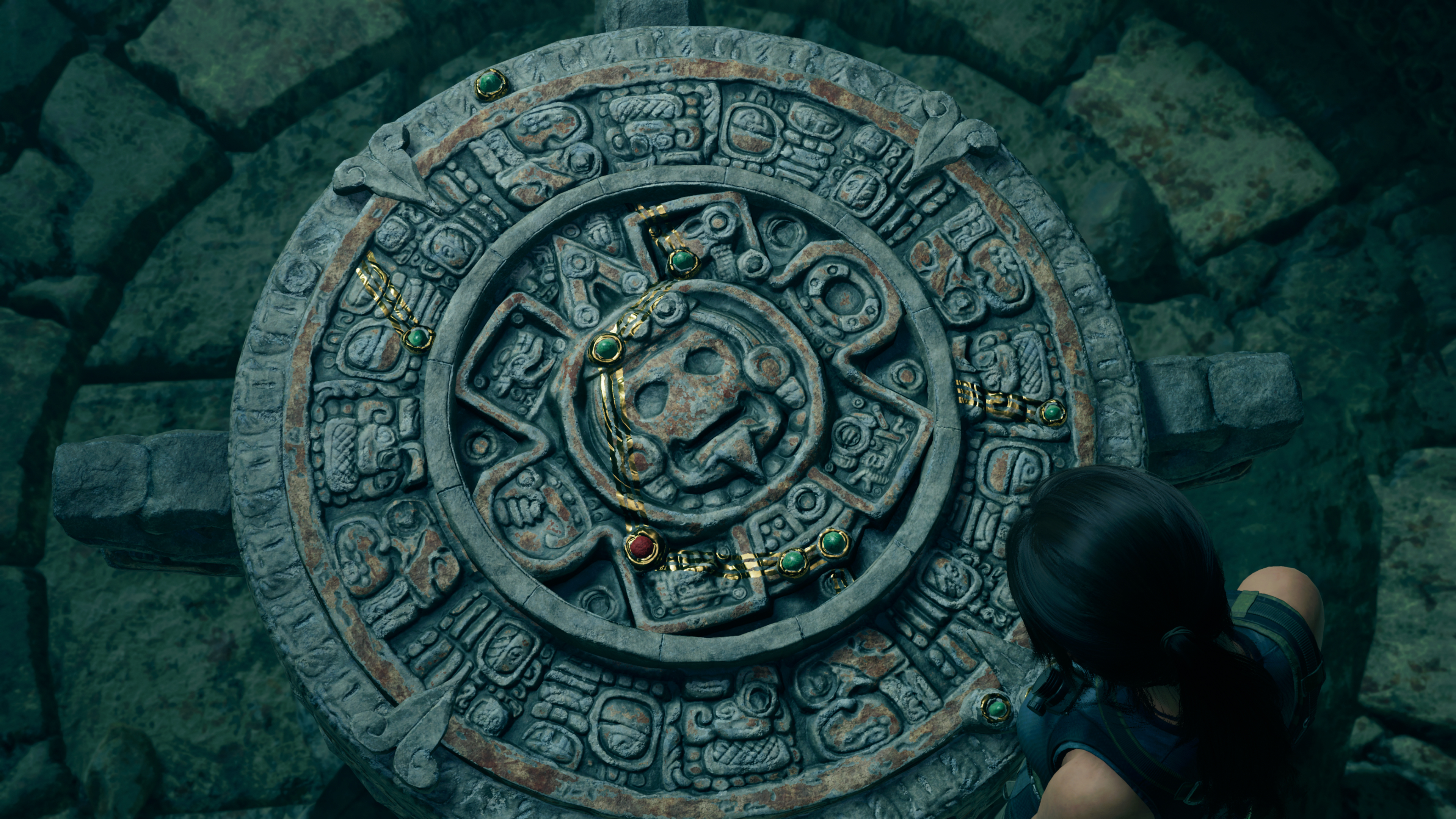
Heading back to Peru, with its lost civilisations and vast temples, is apt considering the original 1996 game was set there.
Lara is still pretty much useless in a close up brawl, but you can offset this weakness by using local plants to craft special potions that heighten your senses (enabling you to track animals and enemies through walls), briefly decrease damage and top up your health. You can craft these - along with arrows - with the simple press of a button or two, so even when you’re scrambling for cover mid-battle, you’ve always got the tools you need to recover and win a fight. Thankfully, there’s noticeably less combat this time around, and every gunfight/stealth encounter is punctuated by long stretches of peaceful exploration, environmental puzzles and platforming.
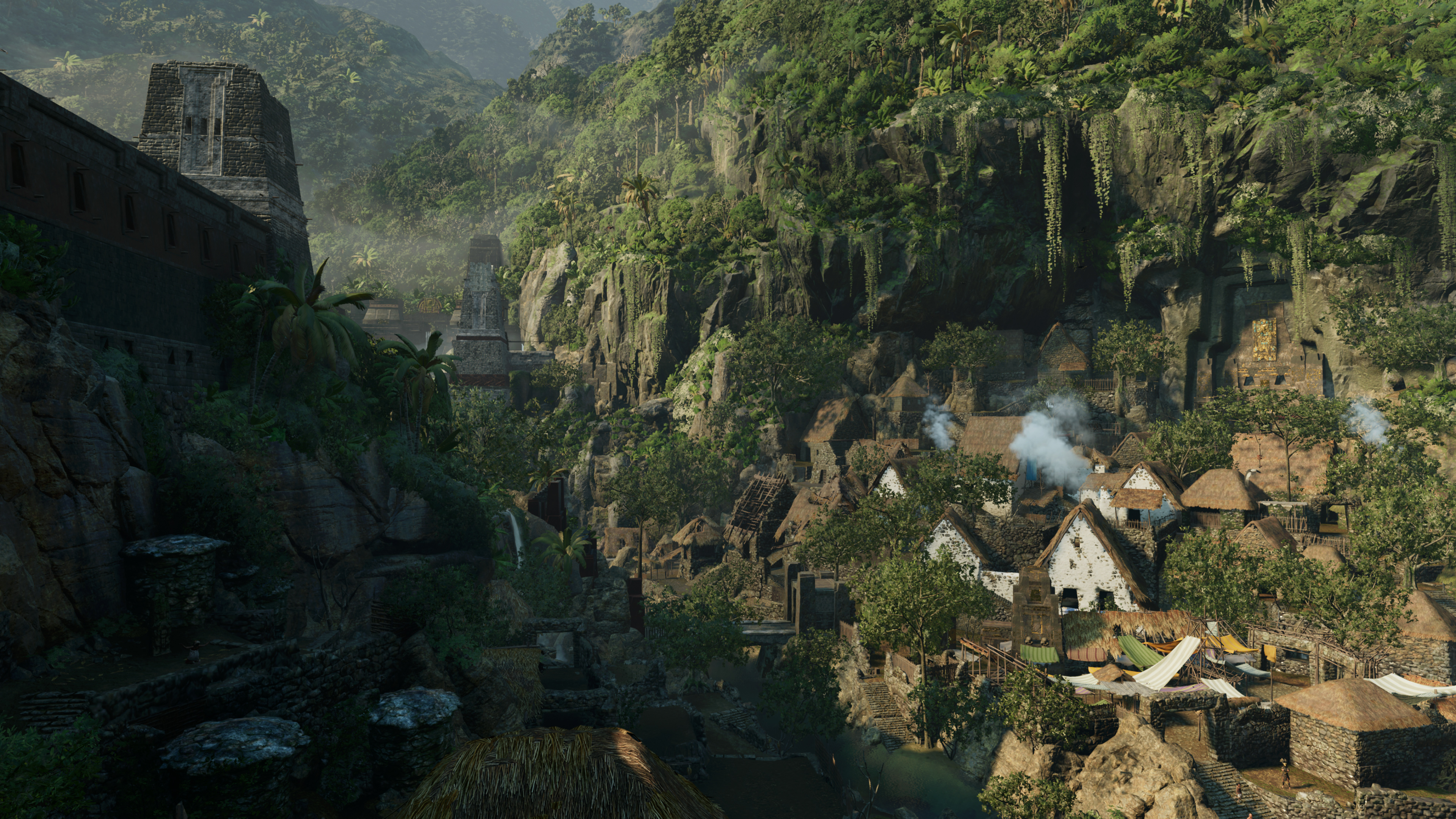
The hidden city of Paititi isn't just a nod to a real-life mythical location - it's a hub full of side-quests and characters all its own.
The game’s Peruvian hub is the biggest the series has offered so far, but it doesn’t actually feel like it. The enclosed canopies of the jungle and the deep, dark caverns of the Cenote are vast and intricate in their own right, but it lacks the grander scale of Rise’s Siberian wasteland. However, that doesn’t mean SotTR lacks some incredible environments full of places to climb and explore. With an enhanced set of climbing skills - including the ability to use your grapple hook to rappel deep into underground caves and boots that let you traverse cave ceilings - and a healthy mix of environmental puzzles, you never feel bored or complacent.
Shadow of the Tomb Raider review: exploration and hunting
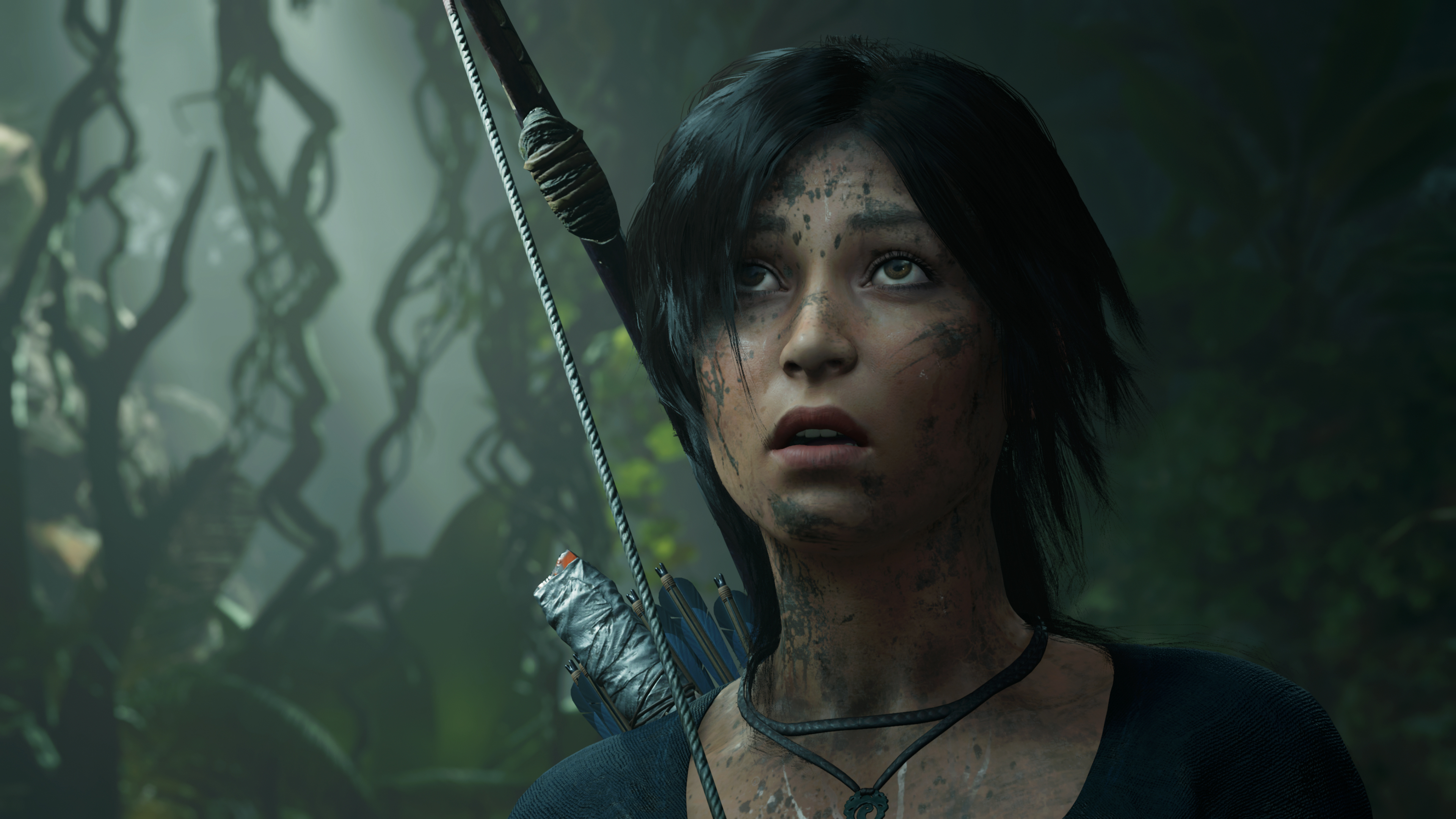
Lara's journey from survivor to veteran adventurer does fall a little flat thanks to some wooden acting and a predictable script.
Diving has also been given an overhaul, leading to plenty of underwater sections where you’ll need to use reeds to hide while piranha and giant eels swim past. These sections are really effective, mainly because they’re never trotted out too often and how they force you to move between cover and pockets of trapped air before you drown. Even the sections where you’re forced to scramble through tight spaces perfectly captures that sense of vulnerability against nature.
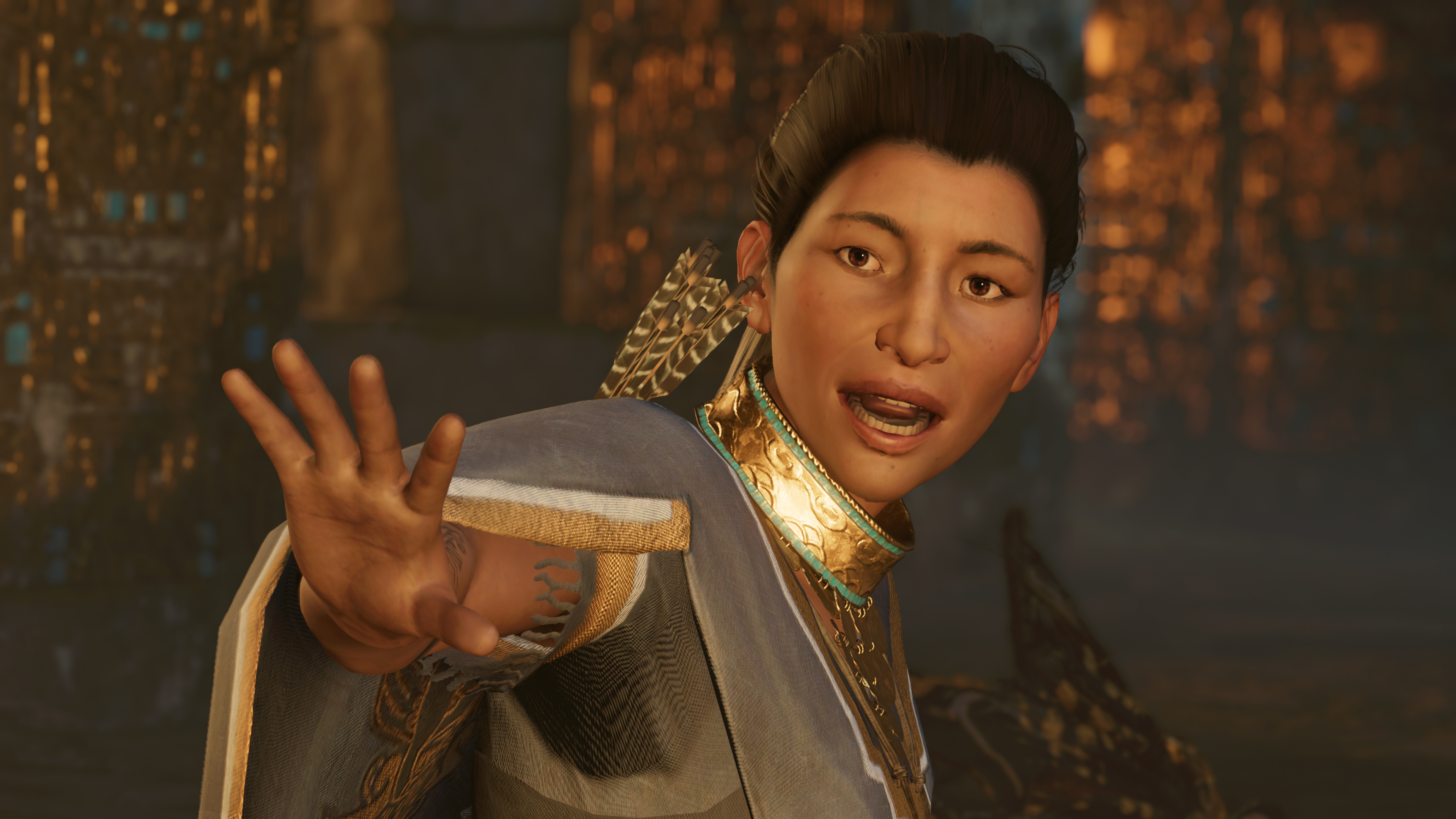
Thankfully, the cast of characters around Lara are full of life and nuance, and elevate the story tenfold.
Base Camps are also back on the menu, enabling you to level up Lara with Skill Points, as well as the ability to change her attire and fast travel. If you want to play the entire game as the polygonal Lara from the original Tomb Raider games you’ll see your dreams realised right here, but it’s in the craftable outfits that you’ll find a little more depth. Hunting certain animals and collecting enough resources will - once you’ve found them in crypts or other secret locations hidden in the jungle - enable you to make outfits that offer key buffs and passive abilities.
The game’s Peruvian hub is huge.
The game doesn't hint that there’s a whole ecosystem of wildlife to hunt and skin, Far Cry-style, but it’s a system the game quickly forgets once you’ve killed a couple of jaguars at the start. These animals are there, but you really have to look for them, and considering much of the game can be finished without them, it’s an aspect to Tomb Raider’s wider set of mechanics that will only appeal to completionists or those bumping up the difficulty in New Game Plus.
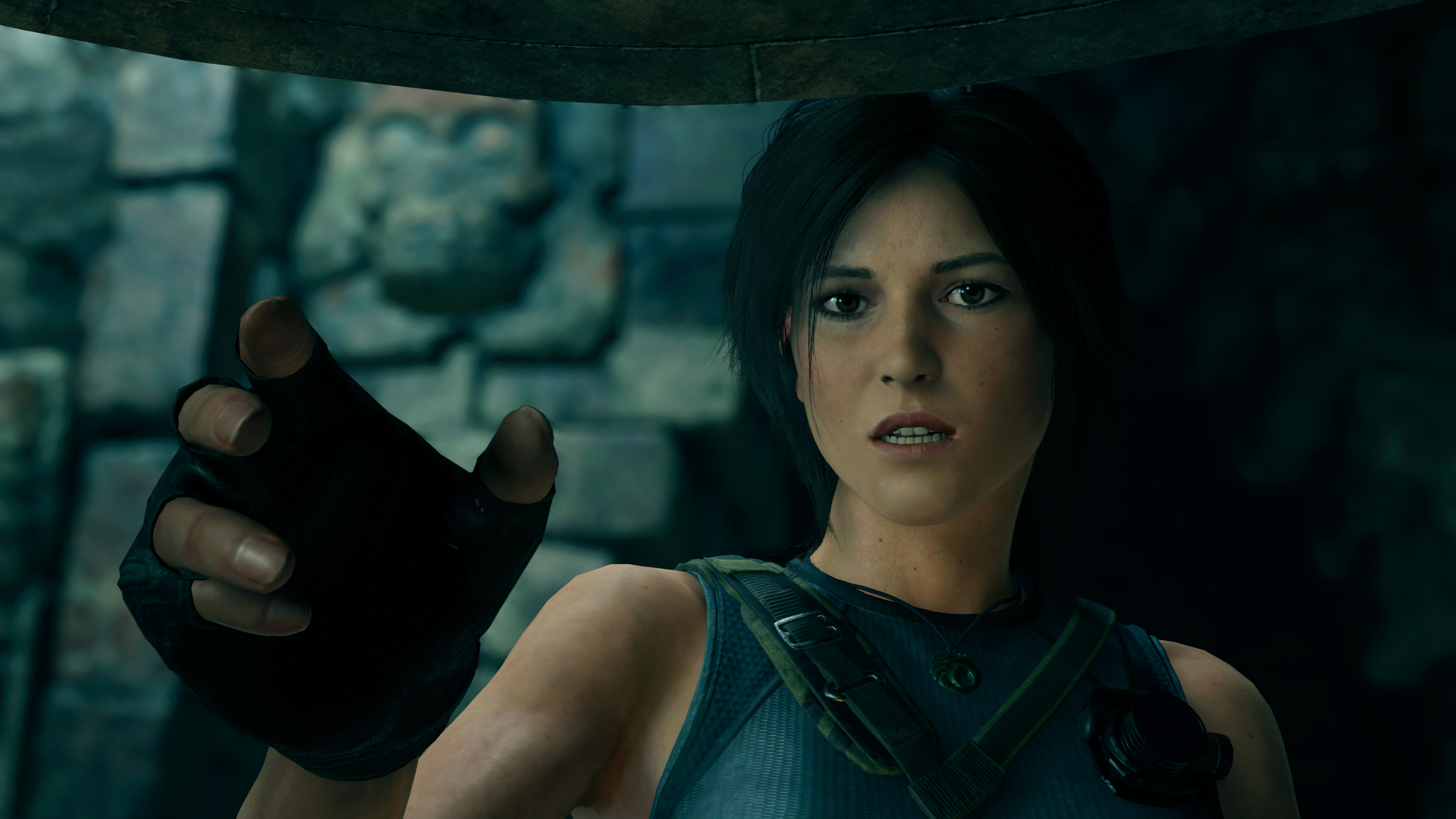
You can collect and craft outfits, use ones from previous games and even run around as a classic version of Lara.
Talking of difficulty, you can actually customise different parts of the game depending on your preference. Puzzles, combat and exploration can all be adjusted individually from the menus. So if you love combat, but find the bigger puzzles too taxing, you can ramp up the challenge of one and reduce the impact of the other. Even navigation can become far more obtuse, with clever environmental hints all but hidden. It might not appeal to purists, but it’s the kind of player agency we want to see more of going forward.
Shadow of the Tomb Raider review: tombs, crypts and extra content
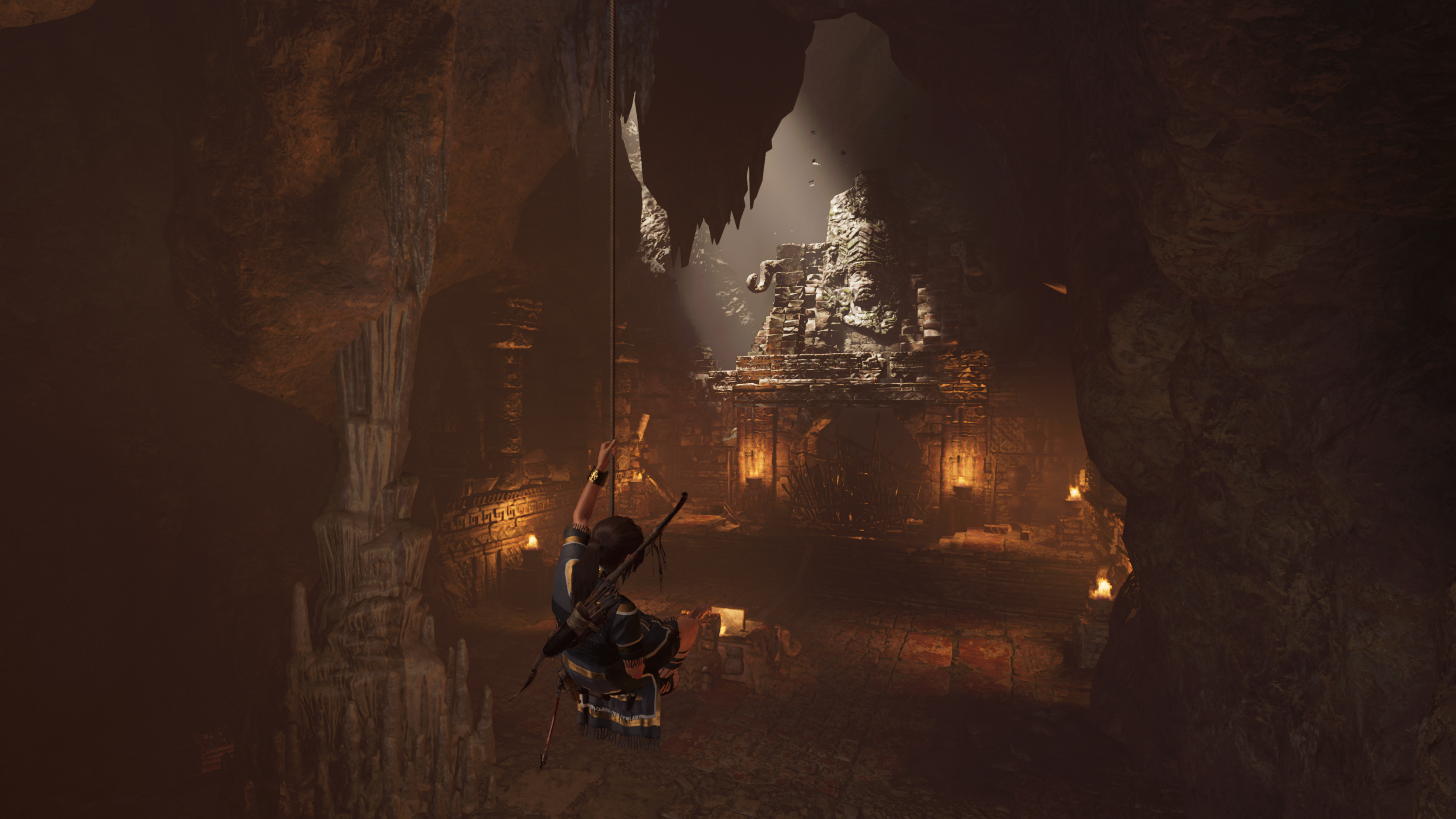
Tombs and crypts off a mixture of puzzles, platforming and danger, and each one different and unique from the last.
We know why you’re really here: tombs! Yes, the sprawling and inricate tombs introduced in Rise are back, and feature some of the series’ most enjoyable (and challenging) puzzles yet. From solving giant conundrums involving ancient counterweights to manouvering through a temple of the dead filled with fox-like wolves and raging fires, these are still the crown jewel in the modern Tomb Raider crown. You can even revisit these Challenge Tombs in the menu once you’ve completed them. The real issue is there just isn’t enough of them - there’s only nine in the main game, but there are a further seven on the way if you cough up for the Season Pass.
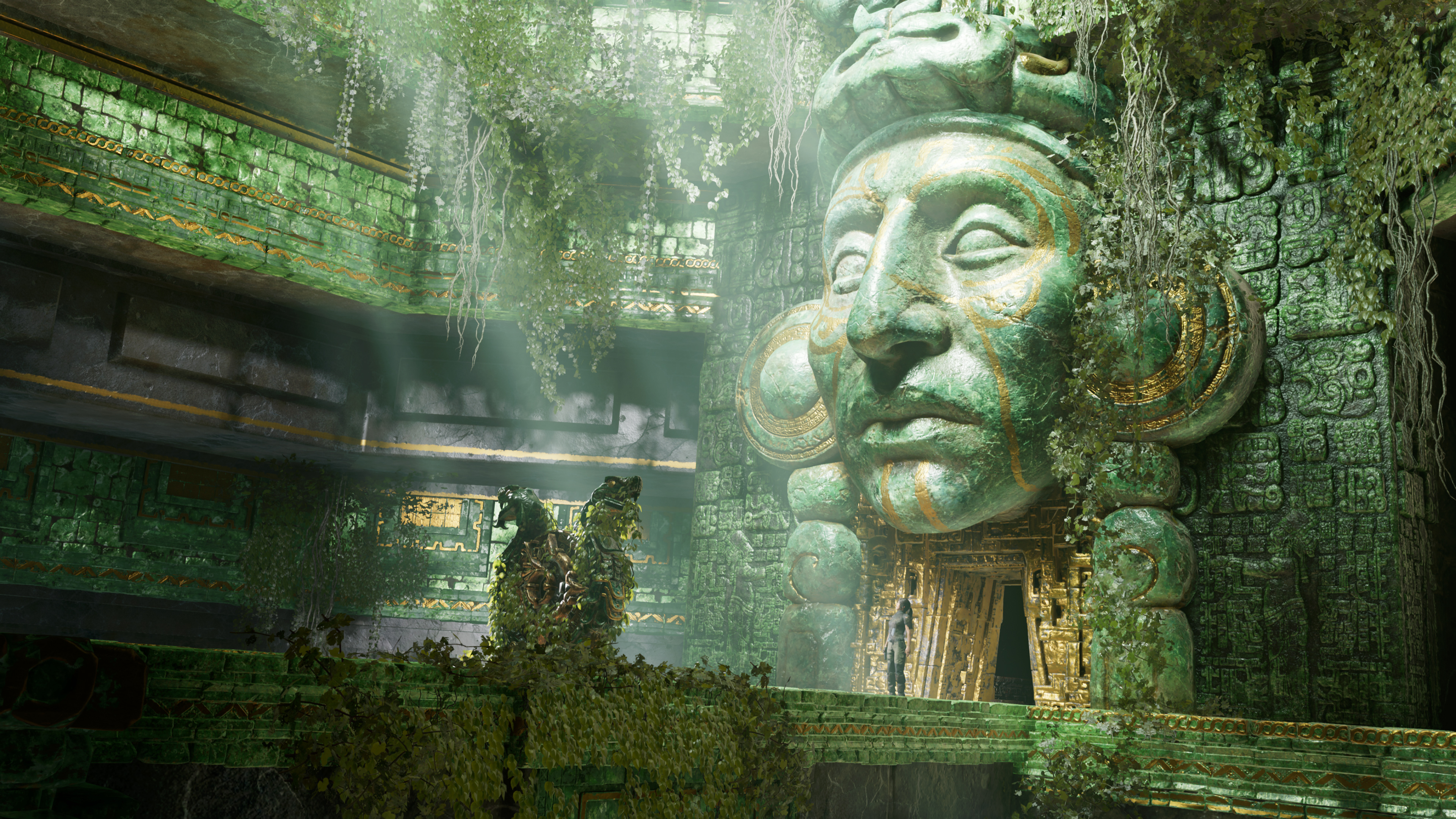
You'll encounter more than just Trinity soldiers in SotTR so prepare to fight for your life on many an occasion...
While those bigger tombs are still too low in the number, there’s still an impressive amount of other things to collect and explore around them. Crypts work like mini-tombs and often feature their own special mix of platforming and puzzles, usually gifting you a new outfit item for your troubles. And with journals to collect, treasures to find and steles to decipher (which enhance your knowledge of a number of ancient languages, which in turn enable you to read monoliths that reveal their own secrets) you’re always picking up something that rewards you with XP, resources and more.
Shadow of the Tomb Raider review: verdict
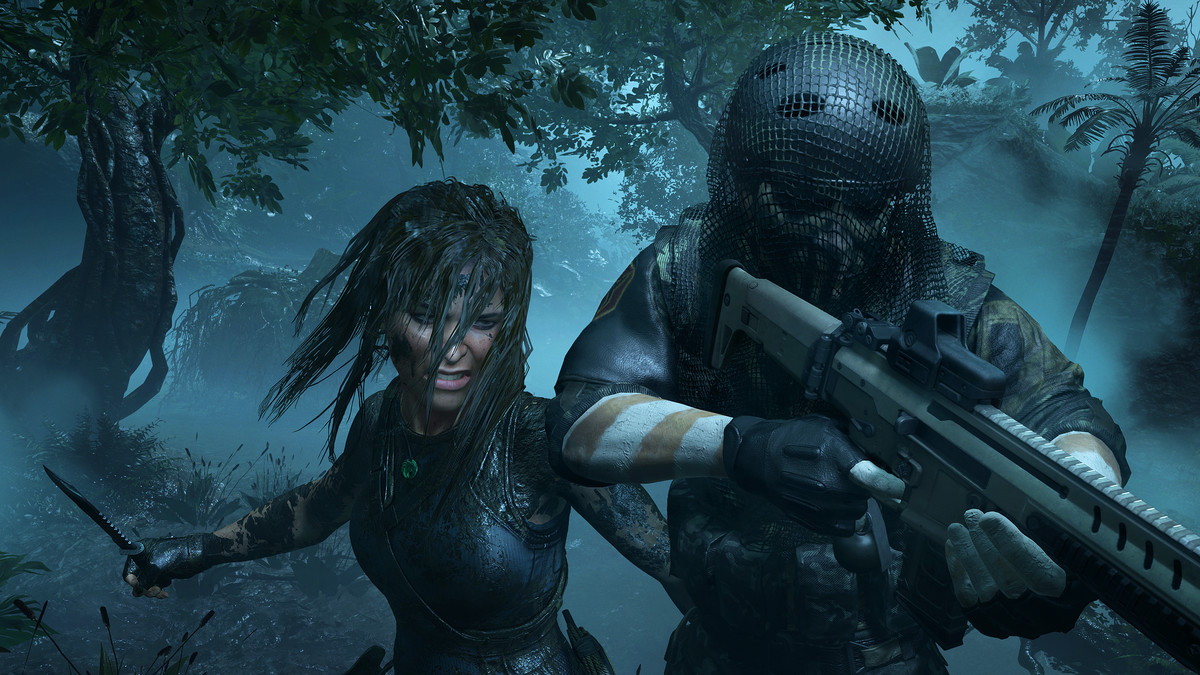
By creating more options for stealth and environmental kills, combat no longer feels like a cover-shooter.
While its far from a ground-breaking reinvention of the series, Shadow of the Tomb Raider is still the most ambitious and rewarding entry yet. Readdressing the balance of combat - not just in the greater use of stealth and elevated movement, but in its ratio to platforming and exploration - has shown its developers has taken note of fan feedback and adjusted Lara’s new adventure as a result. There’s a great deal more agency as a result, and you feel like a grizzled warrior as a result. Graphically it’s a gorgeous sight to behold - especially running on Xbox One X or PS4 Pro - although facial animations aren’t quite as impressive as those found in Naughty Dog’s recent tomb-raiding offerings.
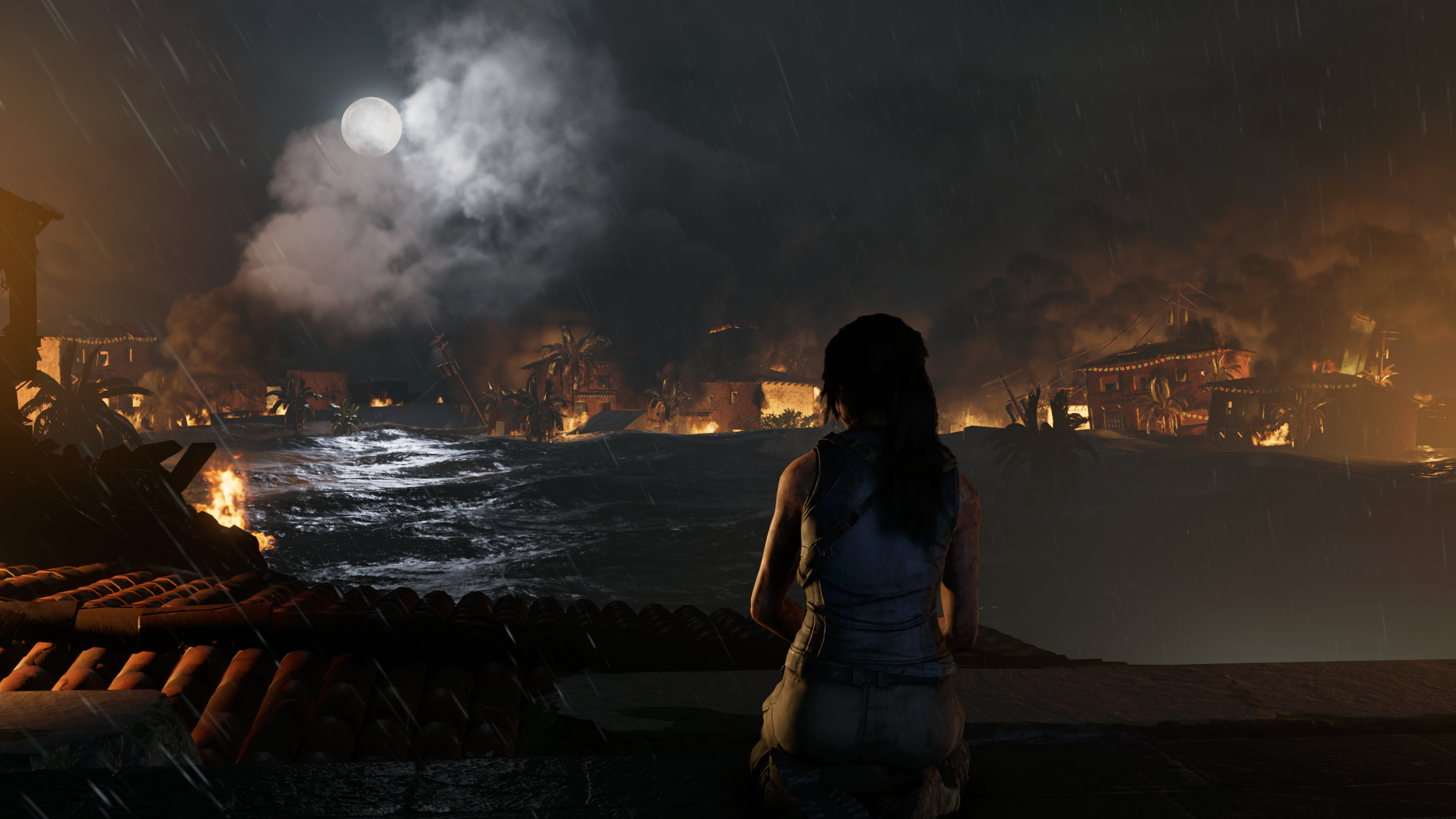
Uncharted-style set-pieces are also a big focus of the game, including some pretty horrific scenes early on.
The bigger focus on set-pieces - such as Lara outrunning a mudslide or taking on an army of Trinity soldiers like a pony-tailed Jack Bauer - does make this the most Uncharted-esque instalment yet (especially so when compared to the tropical setting of 2017’s Uncharted: The Lost Legacy) - but Eidos Montréal and Crystal Dynamics still can’t hold a torch to the character nuance of Naughty Dog. But with a lush new setting, some captivating (if scarce) tombs and all manner of items to collect, there’s never been a better time to start/resume your archaeological antics.
Dom Reseigh-Lincoln has been writing for T3 for over half a decade now, covering everything from mobile phones and laptops right through to video games and gaming peripherals. Purveyor of an excellent beard, as well as some perpetually cheeky offspring, Dom likes to wind down in his spare time by listening to heavy metal.